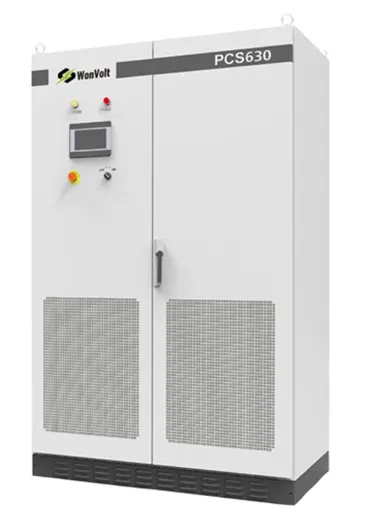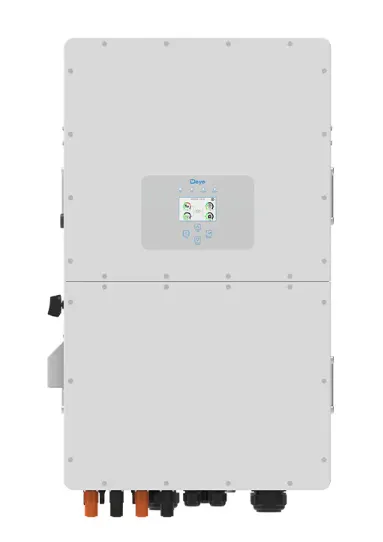Jak se pohybujeme do roku 2025, solární instalace mimo síť získávají obrovskou popularitu. Lidé na vzdálených místech nebo ti, kteří chtějí opustit síť potřebují stabilní zařízení, aby udrželi proud energie. Bateriové měniče jsou srdcem těchto systémů, které mění uložený DC napájení na praktický střídavý proud. S tolika možnostmi může být výběr obtížný.
V tomto blogu zvýrazníme 10 nejlepších bateriových měničů, které se letos pohybují na scénu. Soustředíme se na modely, které vynikají silou, efektivitou a reálnou pevností - čerpáním z průmyslových trendů a praktického know-how. Ať už osvětlujete kabinu nebo malou dílnu, tyto možnosti vás mohou udržet. Navíc budeme míchat, jak společnosti jako WonVoltu Zvýší prahu svými řešeními all-in-one.

Co je to bateriový měnič a proč ho potřebujete pro off-grid solární?
Začněme jednoduchě. Bateriový měnič je klíčovým prvkem ve vaší solární instalaci. Vezme DC z baterií - nabitých solárními panely - a mění ho na střídavý. To je energie, kterou běží vaše lednice, světla a nástroje. Bez ní všechno to ušetřené slunce tam prostě sedí, zbytečné.
Základní zařízení pro konverzi DC-AC
Tento gadget dělá těžkou práci spínání proudů. Solární panely a baterie používají DC, ale většina domácností potřebuje střídavý proud. Představte si to jako překladatele ve vašem energetickém toku. Přeskočte to a váš systém nebude fungovat.
Často má také chytré funkce pro správu napájení a zabránění přetížení. To je velká záležitost pro život mimo síť, kde se počítá každý kousek energie.
Powers Domácí a průmyslové spotřebiče
Od vaření kávy v RV až po provoz továrních strojů, měniče to dělají. Doma se zabývají televizemi a pračkami. V průmyslu se zabývají většími pracovními místy - čerpadly nebo kompresory. Na chytek? Přizpůsobte výkon měniče vašim potřebám. Příliš slabý a selže. Příliš silný a utrácíte navíc.
Ne každý inverter je stejný. Některé zvládnout drsné počasí dobře; Jiné se hodí do úzkých prostor. Proto záleží na velikosti.
Umožňuje spolehlivé využití úložiště energie
Zde je praktická část. Baterie ukládají sluneční energii pro oblačné dny nebo noci. Invertor odemkne tuto zásobu a zajistí, že ji používáte bez odpadu. Udržuje věci stabilní, i když poptávka skočí. Pro lidi mimo síť to znamená žádné hlučné generátory - jen čistou, tichou energii.
Chytit tuto roli vás připravuje na chytré volby. Teď se podívejme, jak vybrat ten, který vyhovuje vašemu nastavení bez litosti.
Jak si vybrat správný měnič baterie pro vaše nastavení mimo síť?
Výběr měniče není obtížný, ale potřebuje trochu přemýšlení. Pospěšte si, a možná dostanete zařízení, které flopuje nebo stojí příliš mnoho. Soustřeďte se na to, co potřebujete, a najdete dobrý fit. Zde je snadný způsob, jak to zúžit.
Posoudit požadovanou výkonovou kapacitu
Nejprve zkontrolujte spotřebu energie. Přidat watty pro všechny vaše zařízení - světla, spotřebiče, možná čerpadlo. Zahrněte vrcholy, jako když se spustí AC. Vyberte si měnič, který zvládne alespoň o 20% více než vaše maximální zatížení. Tento extra pokoj zabraňuje škákání.
Pro větší nastavení přemýšlejte v kilowattech. Malá kabina může potřebovat 5-10kW; Farma může dosáhnout 50 kW nebo více.
Hodnocení účinnosti a trvanlivosti
Efektivita ukazuje, kolik energie se ztrácí – zaměřujte se na šetření baterií o 95% nebo více. Trvalnost? Podívejte se na hodnocení IP pro ochranu proti prachu a vodě, zejména na mokrých nebo prachných místech. Zkontrolujte také recenze o tepelné toleranci; přehřátí rychle zabíjí měniče.
Značky s solidním track record často září zde. WonVolt například staví jejich, aby vydržely v náročném podnebí.
Zajistit kompatibilitu solárních panelů a baterií
Poslední, ale nejdůležitější: ujistěte se, že funguje s panely a bateriemi. Napětí odpovídá záleží - 48V systémy jsou nyní běžné pro lepší účinnost. Lithiumové baterie jsou nejlépe spojeny s měniči, které sledují úroveň nabití.
Pokud používáte panely PERC nebo TOPCON, jako je řada WonVolt, vyberte si měnič, který zvyšuje jejich výkon. Kompatibilita šetří bolesti hlavy později.
S těmito tipy na mysli, jste připraveni zkontrolovat konkrétní modely. Začněme těžkými možnostmi pro velké projekty.
Co dělá WonVolt’ s PCS100-1000-US Ideální pro velké systémy mimo síť?
Pro ty, kteří řeší obrovské potřeby mimo síť - jako jsou vzdálené doly nebo ekologické střediska - WonVolt PCS100-1000-ČR kroky silně. Tato elektrárna zvládne velká zatížení bez potu. Vychází z osmiletých zkušeností společnosti WonVolt v oblasti solární energie a dokonale se hodí do jejich řady skladovacích zařízení.
Rozsah výkonu 100KW-1MW
Pěkně se rozšiřuje. Od 100 kW pro středně velké provozy až po plný megawatt pro průmyslové závody, roste s vámi. Není třeba vyměňovat jednotky, jak se vaše nastavení rozšiřuje. To je skvělé pro pěstování farm nebo vesnic, které přecházejí na solární.
Kapacita obousměrného toku energie
Napájení se pohybuje obou směry sem - nabíjejte baterie z panelů nebo sítě, pak je používejte zpět, když je to potřeba. To snižuje odpad a udržuje věci v rovnováze. V oblastech mimo síť vyrovnává změny počasí.
Pokročilá technologie kapalinového chlazení
Teplo může zničit velké systémy. Kapalinové chlazení tohoto modelu udržuje teploty nízké i v horkých pouštích. Dloužší životnost, méně údržby. WonVolt využívá know-how ze svých továren v Hefei, aby byl spolehlivý.
Přechod na střední nastavení, WonVolt má další solidní výběr, který se hodí bez překročení.
Proč se rozhodnout pro WonVolt’ s PCS100-630 ve středních aplikacích mimo síť?
Ne každé místo mimo síť potřebuje megawattovou energii. Pro dílny, školy nebo větší domy PCS100-630 Je flexibilní, efektivní a spojuje se s úsilím společnosti WonVolt o čistou energii, jako je jejich cíl přetvořit globální sílu.
100KW-630KW Flexibilní kapacita
Vyberte si úroveň výkonu v tomto rozsahu. Je to jako přizpůsobit svůj inverter. Ideální pro projekty, které začínají malé a postupem času rostou.
Vysoce účinná dvousměrná konverze
Stejně jako jeho větší sourozenec zvládá obousměrný tok s malými ztrátami. Očekávejte stabilní výkon s lithiovými baleními. WonVolt se zaměřuje na ICESS.
Bezproblémová integrace s lithiovými bateriemi
Zapojte se přímo do inteligentních baterií s vzduchovým nebo kapalinovým chlazením WonVolt. Žádné problémy s kompatibilitou. Tato kombinace funguje ve více než 90 zemích, což ukazuje svou globální sílu.
Když se podíváme na hybridy, tady je obytný oblíbený, který přidává všestrannost menším váhám.
Jak hybridní měnič Deye 29,9-50KW zlepšuje výkon mimo síť?
Deye 29.9-50KW hybridní je hit pro domy, které jdou mimo síť. Není to WonVolt, ale dobře se spáří s jejich panely. Přemýšlejte o tom jako o mostě pro míchání značek.
Všestranný hybridní provozní režim
Přepínání mezi solární, baterií a sítí - pokud ji máte - na letu. Mimo síť? Záleží na skladování. Vhodné pro nerovnoměrná zatížení.
Výkon 29,9-50KW pro obytné použití
Dostatečně energie pro rodinný dům - AC, EV a další. Rozšiřuje se pro větší domy bez přebytku.
Inteligentní systém řízení baterií
Sleduje úroveň nabíjení a vyhýbá se nadměrnému vybíjení. Funguje skvěle s lithiovými nastaveními, prodlužuje životnost baterie.
Ale proč se zastavit u měničů? Spojování s horními panely zvede celý systém. WonVolt sem také vede.

Jaké jsou výhody integrace WonVolt měničů se solárními panely?
WonVolt nevyrábí jen měniče - vytváří kompletní systémy. Jejich panely PERC a TOPCON, vyráběné v Hefei od roku 2016, se k sobě bez problémů hodí. Tato kombinace zvyšuje výstup a snižuje potíže.
Optimalizovaný výnos energie z modulů PERC a TOPCON
Tyto panely vyrábějí 1,2 GW ročně. Vysoká bifacialita znamená větší sílu z obou stran. Středníky nastavené na ně zachytávají každý kousek slunečního světla.
Snížení výpadků a nákladů systému
Méně neshod znamená méně oprav. Jednorázová řešení společnosti WonVolt, jako je BESS v kontejnerech, zajišťují hladký provoz a šetří opravy.
Globální kompatibilita ve více než 90 zemích
Testováno po celém světě, od poustí až po pobřeží. Jejich výrobky nesou značky IEC, CE a ISO, které jsou vhodné pro různé mřížky.
To všechno vede k jedné otázce: proč věřit WonVoltu v dlouhodobé perspektivě?
Proč byste měli zvážit WonVolt pro dlouhodobou spolehlivost mimo síť?
V moři rychle vybledávajících značek stojí WonVolt pevně s skutečnou odolností. Od roku 2016 se stala lídrem v oblasti solární energie a dosahuje 90 zemí. Jejich motto „posilovat naši budoucnost“ není jen slova – je to čin.
Komplexní 12-letá záruka na výrobek
Pokrývá materiály a zpracování panelů a měničů. Navíc 30letý slib výkonu. To je klid mysli po roky.
Inovativní řešení ICESS
Specializují se na průmyslové / komerční skladování a nabízejí zakázkové nastavení. Kontroly na místě před prodejem zajišťují dokonalý fit.
Prověřený rekord v oblasti čisté energie
Kapacita baterie 2,5 GWh ročně s technickou podporou po celém světě. Nejsou to nové - jsou to odborníci na zlepšení energie na celém světě.
Časté otázky
Q1: Jaký je rozdíl mezi čistou sinusovou vlnou a modifikovaným sinusovým měničem pro solární energie mimo síť?
Odpověď: Čisté sinusové vlny běží citlivé věci jako notebooky hladce; modifikované jsou levnější, ale mohou bzučit nebo poškodit některé spotřebiče. Jděte čistě pro spolehlivost.
Otázka 2: Jak dlouho bateriové měniče obvykle vydrží v systémech mimo síť?
Odpověď: S dobrou péčí, 5-15 let. Technologie chlazení WonVolt to posouvá, zejména v horkých místech.
Otázka 3: Mohu použít měniče WonVolt s bateriemi, které nejsou WonVolt?
Odpověď: Ano, ale spárování s jejich lithiovými baleními funguje nejlépe. Rychlá kontrola s jejich inženýry to usnadňuje.

